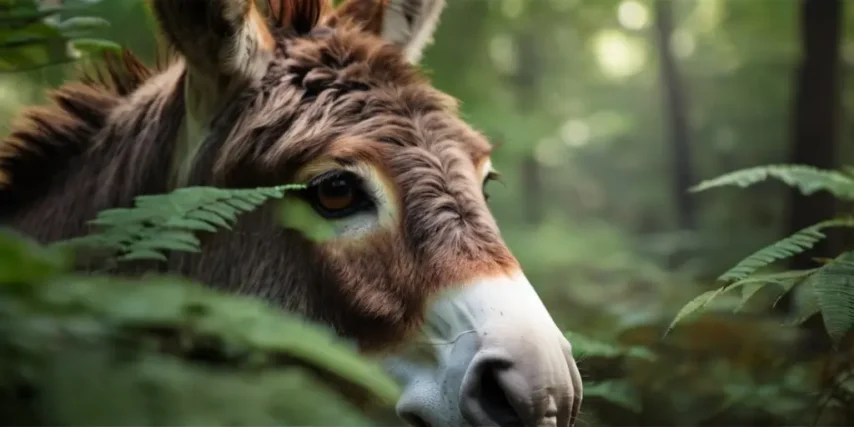The Enigmatic Beauty of Donkey Eyes: Exploring Nature’s Masterpiece
In the vast tapestry of the animal kingdom, each species possesses its own unique charm and allure. Among these, the humble donkey stands out not only for its steadfast demeanor but also for the captivating beauty of its eyes. Often overlooked in favor of more conventionally “beautiful” creatures, the donkey’s eyes possess a mesmerizing quality that deserves closer examination. In this exploration, we delve into the intricacies of donkey eyes, uncovering the secrets behind their undeniable allure.

The Anatomy of Donkey Eyes:
To truly appreciate the beauty of donkey eyes, one must first understand their anatomy. Donkeys, like many other mammals, possess complex ocular structures designed for optimal function in their environment. However, it is the unique combination of features that sets their eyes apart.
One of the most striking aspects of donkey eyes is their large, expressive appearance. Set against the backdrop of their often-muted fur, the eyes stand out as windows to the soul, inviting observers to peer into their depths. The elongated shape of the eyes, framed by long lashes, adds to their allure, giving donkeys a distinctively gentle and wise expression.
Yet, it is not just their size that makes donkey eyes so captivating. The rich, warm hue of their irises, ranging from deep browns to soft hazels, lends a depth and intensity to their gaze. Unlike the piercing stare of predators or the bright, colorful eyes of some birds, donkey eyes exude a quiet strength and grace that is uniquely their own.

The Mystery of Expression:
Beyond their physical attributes, donkey eyes possess a mysterious quality that defies easy explanation. Unlike domesticated animals bred for specific traits, donkeys retain a sense of wildness that is reflected in their gaze. It is as if behind those soulful eyes lies a wealth of untold stories and ancient wisdom, passed down through generations.
Part of the allure of donkey eyes lies in their ability to convey emotion without words. From the gentle curiosity of a foal exploring its surroundings to the serene contentment of a well-loved companion, donkeys express a wide range of emotions through their eyes alone. Their ability to form deep connections with humans and other animals alike is mirrored in the depth and complexity of their gaze.
Cultural Significance:
Throughout history, donkeys have held a special place in human culture and mythology. Revered for their role as working animals and valued for their loyalty and endurance, donkeys have been immortalized in art, literature, and folklore around the world. In many cultures, they are seen as symbols of humility, patience, and strength, qualities that are reflected in their wise and gentle eyes.
In ancient Egypt, donkeys were associated with the god Set, who was often depicted with the head of a donkey. In Greek mythology, they were linked to Dionysus, the god of wine and revelry, who was said to ride a donkey. Even in modern times, donkeys continue to inspire artists, writers, and filmmakers, their eyes serving as a powerful symbol of resilience and grace.

Conservation and Appreciation:
Despite their cultural significance and undeniable beauty, donkeys face numerous challenges in the modern world. From habitat loss and poaching to exploitation and neglect, these gentle creatures are often overlooked and undervalued. As such, it is more important than ever to raise awareness of their plight and advocate for their protection.
By shining a spotlight on the beauty of donkey eyes, we can foster a greater appreciation for these remarkable animals and inspire action to ensure their survival for generations to come. Whether through supporting conservation efforts, volunteering at sanctuaries, or simply spreading the word, we all have a role to play in preserving the magic of donkeys and the enchanting beauty of their eyes.
In the grand tapestry of nature, every creature has its own unique story to tell. For the humble donkey, it is a tale of resilience, strength, and quiet beauty, embodied in the captivating depths of its eyes. As we gaze into those soulful orbs, may we be reminded of the sacred bond that connects all living beings and the responsibility we share to protect and cherish our fellow creatures, both great and small.







